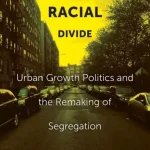America’s Jails: The Search for Human Dignity in an Age of Mass Incarceration
 Author: Derek Jeffreys
Author: Derek Jeffreys
Publisher: NYU Press, 2018. 256 pages.
Reviewer: Bassey Koofreh | March 2023
America’s Jails: The Search for Human Dignity in an Age of Mass Incarceration by Jeffreys Derek is an appealing read for those with an interest in practical account of events within American jails, providing insight into the challenges surrounding America’s correctional services. In the introduction, Jeffreys gives the reader a brief glimpse into the degree of jail cruelty, noting that ”The Cook County Jail, Chicago is a brutal, overcrowded, confusing, and filthy place…” (p. 36). The author stresses that Cook County jail has, over the years, been a place for staff abuse of inmates, gang violence, threat of violence from other inmates, substandard medical care for inmates suffering from mental illness, and little focus on individual inmates’ needs. The functions of jails within American society is considered in chapter 2, in which the author explores how jails rule the lives of millions of Americans. He describes how inmates are contained in an unendurable, uncongenial environment with much violence. Chapter 3 continues with a discussion on human dignity using a philosophical approach. Here, the author distinguishes between inherent dignity and imputed dignity. Issues surrounding inmate stigmatization by jail staff and the money bail system that dominates the U.S. penal system is considered in chapter 4. In chapter 5, policy questions are addressed, as the author proposes mechanisms to protect inmates, reduce jail populations through investigative journalism, jail monitoring techniques, and calls for better mental health care. In the conclusion, the author emphasizes the need for bail reform, and highlights efforts made to improve conditions for inmates at Cook County Jail.
In terms of main arguments, the author argues that the poorly managed mental health care structure within the U.S. has left, in its wake, a rise in the population of inmates suffering from mental illness revolving within the jail system. This has led to a rise in jail populations in the last 30 years. Available data is in line with the author’s claims, as mental health institutions in America are inadequate and Americans lack real access to such services now more than ever (Mochari-Greenberger & Pande, 2021). The author touches on the subject of money bail and its effects, including the difficulties that many inmates face to secure their release from the Cook County Jail. Indeed, it is worth noting that literature suggests that money bail may be as or less effective as other less intrusive or burdensome methods, such as drug testing, electronic monitoring and regular meetings with pretrial officers (Stevenson et al., 2017).
The author also draws a distinction between “jail” and “prison,” whilst noting the erroneous belief that they can be used interchangeably. The author maintains that a ”prison is a state or federal institution, and generally houses inmates who have been convicted of a crime. In contrast, local governments usually run jails, and most jail inmates have yet to be tried or sentenced” (p. 3). The author notes that a worrisome aspect of jails specifically is that they often put more limits on the entry of guests, researchers, and legal representatives. As such, the general public possesses less information about what really takes place within the confines of jail walls. The author also notes that cardinal challenges confronting the Cook County Jail are inmate recidivism and mental illness. The author maintains that many inmates released from the jail find their way back, noting that from ”2007 to 2012, out of a total of over 501,432 inmates admitted, 156,631 were admitted only once, 50,173 twice, 45,162 three to five times, 9,865 six to ten times, and 903 more than eleven times” (p. 34).
Further, the author argues that those with manageable, but chronic, diseases receive poor medical attention in many U.S. jails, whilst noting that understaffing certainly accounts for some of this neglect in addition to inmates needing to pay for medical services. The author asserts that, in the United States, those arrested are subjected to treatment that often makes them objects of disgust. The author stresses that effective monitoring organizations need to have free access to the jail, making both scheduled and unscheduled visits. Little empirical research has been carried out about life in jails, noting that the United States’ total jail populations, annual committals, and even the number of jails have only been documented since the 20th century.
Finally, the author argues that a vast majority of inmates detained in jails are accused of committing simple bailable offenses, such as trespassing or stealing. The violent inmate population only accounts for 25 to 30% of pretrial inmates. The author further asserts that African Americans are incarcerated at disproportionate levels throughout the United States. As Nellis (2021) mentions, people of color are imprisoned in jails across the U.S. at almost five times the rate of whites, and Latinos are 1.3 times more likely to be imprisoned than non-Latino whites. On the issue of bail search, the author notes that jails have a legal right and obligation to search inmates upon their arrival in a facility. However, in the 1990s and into the early 2000s, the Cook County Jail conducted these searches in a deeply degrading manner. The author notes that we have also abandoned any commitment to rehabilitation, adopting an increasingly punitive attitude toward inmates in jails.
Jeffreys’s book allows for a unique, interdisciplinary perspective in understanding American jails and highlights the plight of inmates and considers philosophical questions about human dignity in U.S. jails. It will appeal to a wide range of audiences, including policymakers, lawyers, academics, correctional officers, journalists and medical professionals working within correctional institutions.
References:
Heidi Mochari-Greenberger & Reena L. Pande, Behavioral Health in America During the COVID-19 Pandemic: Meeting Increased Needs Through Access to High Quality Virtual Care, 35 Am. J. Health Promotion 312 (2021).
Ashley Nellis, The Sentencing Project, The Color of Justice: Racial and Ethnic Disparity in State Prisons (2021), https://www.sentencingproject.org/app/uploads/2022/08/The-Color-of-Justice-Racial-and-Ethnic-Disparity-in-State-Prisons.pdf.
Megan Stevenson & Sandra G. Mayson, Bail Reform: New Directions for Pretrial Detention and Release, U. Penn. Law Sch., Legal Scholarship Repository (2017), https://scholarship.law.upenn.edu/faculty_scholarship/1745.
Bassey Kooffreh is a Graduate Research Assistant at the University of Mississippi.


